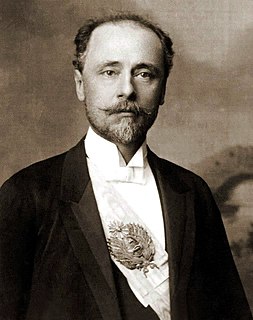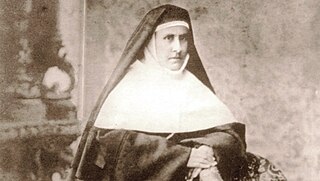 W
WEulalia Ares de Vildoza (1809–1884), was an Argentinian coup leader who famously deposed the governor of the Catamarca Province in 1862.
 W
WJuana Azurduy de Padilla was a guerrilla military leader from Chuquisaca, Viceroyalty of the Río de la Plata. She fought for Bolivian independence alongside her husband, Manuel Ascencio Padilla, earning the rank of Lieutenant Colonel. She was noted for her strong support for and military leadership of the indigenous people of Upper Peru. In Buenos Aires, Argentina, in a controversial political move, statue of Azurduy replaced the one of Christopher Columbus in front of the Casa Rosada, at the time she was a largely forgotten historical figure.
 W
WHippolyte Bouchard, or Hipólito Bouchard, was a French-born Argentine sailor and corsair who fought for Argentina, Chile, and Peru.
 W
WMamerto Esquiú Medina - born Mamerto de la Ascensión Esquiú - was an Argentine Roman Catholic professed member from the Order of Friars Minor and the Bishop of Córdoba from 1880 until his death.
 W
WMaría de la Encarnación Ezcurra was an Argentine politician, wife of Juan Manuel de Rosas.
 W
WMacacha Güemes (1787-1866) was an Argentine heroine. A sister of Martín Miguel de Güemes, she, alongside her sister Francisca Güemes, is counted as a heroine of the Argentine War of Independence for her participation in the Gaucha War during the war of independence.
 W
WMiguel Ángel Juárez Celman was an Argentine lawyer and politician. President of the Nation from October 12, 1886 until his resignation on August 6, 1890.
 W
WBenita Martínez Pastoriza de Sarmiento was the second wife of Domingo Faustino Sarmiento, Argentina's First Lady, and the mother of Domingo Fidel Sarmiento. She was married to Domingo Castro y Calvo before being married to President Sarmiento.
 W
WAgustina Ortiz de Rozas (1826-1898) was an Argentine philanthropist and political figure, president of the Sociedad de Beneficencia. She was the youngest sister of the general Juan Manuel de Rosas and was born in Buenos Aires. Ortiz married Lucio Norberto Mansilla at 15 years of age and had the five children: Lucio Victorio Mansilla, Eduarda, Lucio Norberto, Agustina and Carlos. She was renowned as one of the most beautiful women of her time according to many of her contemporaries. She played some role in Argentina's founding.
 W
WMercedes de Lasala de Riglos or (incorrectly) Ana Lasala de Riglos, known as Madame Riglos, was an Argentinian patriot and socialite during the period when Argentina was gaining its independence from Spain. Her home was a meeting place where information could be exchanged and the issues of the day discussed. In 1823 she was one of the founders of the famous philanthropic society Sociedad de Beneficencia de Buenos Aires and served as its first president.
 W
WSaturnina Rodríguez de Zavalía – in religious Catalina de María – was an Argentine Roman Catholic professed religious and the founder of the Handmaids of the Heart of Jesus. Zavalía was married for just over a decade before she followed her religious calling and founded an order that spread across Argentina; she collaborated with José Gabriel del Rosario Brochero before her death.
 W
WCamila Rolón - in religious Camila of Saint Joseph - was an Argentine Roman Catholic professed religious and the founder of the Poor Sisters of Saint Joseph. Rolón survived a cholera outbreak in Buenos Aires in the 1870s that claimed her mother and brother and after this made two failed attempts to enter the Capuchin Poor Clares and the Carmelites. In 1880 she moved to Mercedes where she founded an orphanage that would later evolve into a religious congregation. Her order spread to the point that the motherhouse relocated to Rome as did she and it was there that she died.
 W
WManuela de Rosas or more commonly “Manuelita de Rosas”, was an Argentine personality and political activist. She was born in Buenos Aires, Argentina and the influential daughter of Juan Manuel de Rosas and Encarnación Ezcurra.
 W
WMariquita Sánchez de Thompson Y de Mendeville, also known simply as Mariquita Sánchez de Thompson, was a patriot from Buenos Aires and one of its leading salonnières, whose tertulias gathered many of the leading personalities of her time. She is widely remembered in the Argentine historical tradition because the Argentine National Anthem was sung for the first time in her home, on May 14th, 1813.
 W
WGaspar de Santa Coloma y Sollano was a Spanish merchant prominent in the economic and cultural development of colonial Argentina.